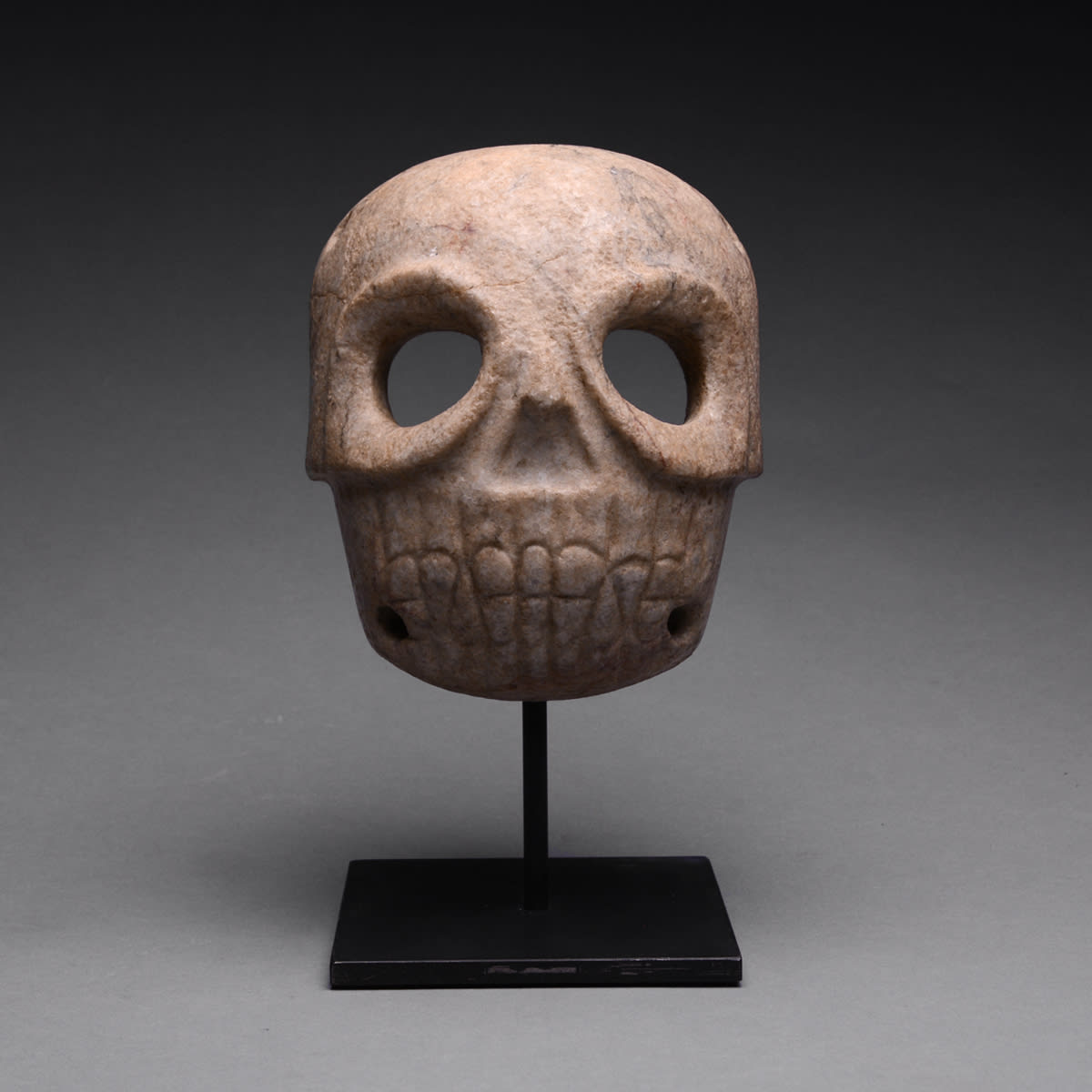Stone Skull Mask, 1st Century CE - 5th Century CE
Stone
height 14.6 cm
height 5 3/4 in
height 5 3/4 in
PF.5825
Further images
The artist who created this fascinating stone skull mask was not only an exceptional lapidary artist, but his choice of material was also very perceptive. The stone is remarkably similar...
The artist who created this fascinating stone skull mask was not only an exceptional lapidary artist, but his choice of material was also very perceptive. The stone is remarkably similar in color and composition to the human skull, especially in regards to the vein formations and the general texture and feel. The artist may have gone through many quarries to find this special stone. In general, Mesoamericans believed that the universe embraced the heavens and underworld as one. There was no separation between the terrestrial world and the realm of the supernatural. Everyday experience incorporated these two worlds together; it was a basic aspect of their reality. Thus, the world of the dead was closely integrated into the world of the living. Deceased ancestors were believed to have powerful influences upon the living. Major festivals honored the dead. Most likely, this mask represented the death deity and would have been worn in such an elaborate ceremony. By appeasing the death deity through ritual, the ancient Costa Ricans may have felt that their ancestors would be safe in the Underworld and in turn have favorable influences upon the living. Or perhaps, the death deity acted as an intermediary for the humans to communicate with the deceased. Due to their perception of the unity of the terrestrial worlds and the Underworld as one, we can only imagine that this mask and the ritual performances in honor of the death deity had good intentions for all: the gods, humans and the dead.







